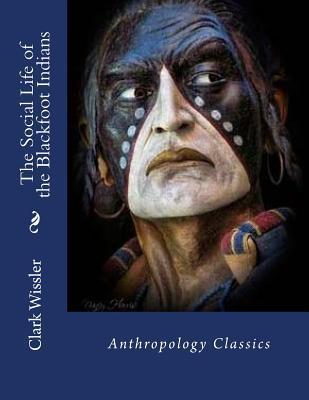The Social Life of the Blackfoot Indians: Anthropology Classics

The Social Life of the Blackfoot Indians: Anthropology Classics
The Blackfoot Confederacy or Niitsitapi, meaning "original people" is the collective name of three First Nation band governments in the provinces of Saskatchewan, Alberta, and British Columbia, and one Native American tribe in Montana, United States. The Siksika ("Blackfoot"), the Kainai or Kainah ("Many Chiefs"), and the Northern Piegan or Peigan or Piikani ("Poor Robes") reside in Canada; the Southern Piegan or Pikuni are located in the United States. Historically, the member peoples of the Confederacy were nomadic bison hunters and trout fishermen, who ranged across large areas of the northern Great Plains of Western North America, specifically the semi-arid shortgrass prairie ecological region. They followed the bison herds as they migrated between what are now the United States and Canada, as far north as the Bow River. In the first half of the 18th century, they acquired horses and firearms from white traders and their Cree and Assiniboine go-betweens. The Blackfoot used these to expand their territory at the expense of neighboring tribes. Now riding horses, the Blackfoot and other Plains tribes could also extend the range of their buffalo hunts. The systematic commercial bison hunting by white hunters in the 19th century nearly ended the bison herds and permanently changed Native American life on the Great Plains, since their primary food source was no longer abundant. Periods of starvation and deprivation followed, and the Blackfoot tribe was forced to adopt ranching and farming, settling in permanent reservations. In the 1870s, they signed treaties with both the United States and Canada, ceding most of their lands in exchange for annuities of food and medical aid, as well as help in learning to farm. Nevertheless, the Blackfoot have worked to maintain their traditional language and culture in the face of assimilationist policies of both the U.S. and Canada.
69.36Lei
69.36Lei
Livrare in 2-4 saptamani
Descrierea produsului
The Blackfoot Confederacy or Niitsitapi, meaning "original people" is the collective name of three First Nation band governments in the provinces of Saskatchewan, Alberta, and British Columbia, and one Native American tribe in Montana, United States. The Siksika ("Blackfoot"), the Kainai or Kainah ("Many Chiefs"), and the Northern Piegan or Peigan or Piikani ("Poor Robes") reside in Canada; the Southern Piegan or Pikuni are located in the United States. Historically, the member peoples of the Confederacy were nomadic bison hunters and trout fishermen, who ranged across large areas of the northern Great Plains of Western North America, specifically the semi-arid shortgrass prairie ecological region. They followed the bison herds as they migrated between what are now the United States and Canada, as far north as the Bow River. In the first half of the 18th century, they acquired horses and firearms from white traders and their Cree and Assiniboine go-betweens. The Blackfoot used these to expand their territory at the expense of neighboring tribes. Now riding horses, the Blackfoot and other Plains tribes could also extend the range of their buffalo hunts. The systematic commercial bison hunting by white hunters in the 19th century nearly ended the bison herds and permanently changed Native American life on the Great Plains, since their primary food source was no longer abundant. Periods of starvation and deprivation followed, and the Blackfoot tribe was forced to adopt ranching and farming, settling in permanent reservations. In the 1870s, they signed treaties with both the United States and Canada, ceding most of their lands in exchange for annuities of food and medical aid, as well as help in learning to farm. Nevertheless, the Blackfoot have worked to maintain their traditional language and culture in the face of assimilationist policies of both the U.S. and Canada.
Detaliile produsului










